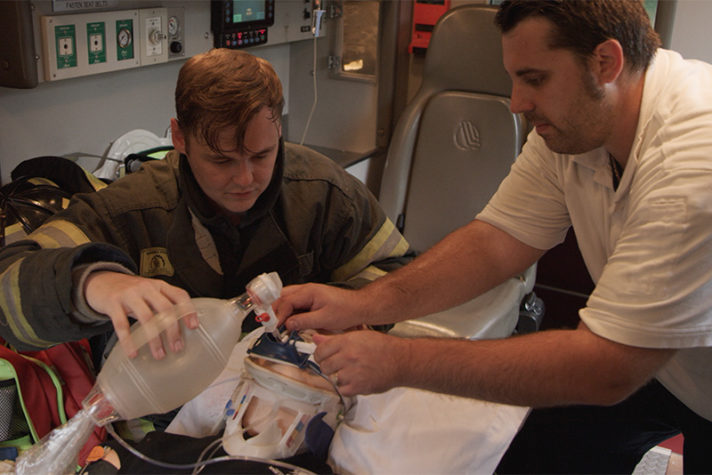
If you’ve ever required emergency medical care or found yourself watching any cop or medical drama on cable, the chances are high that you’ve witnessed emergency medical service professionals at work. However, what you probably didn’t realize at the time was the distinct and nuanced roles each person plays in keeping a patient alive on the way to a healthcare facility.
Both EMTs and paramedics play vital roles during emergency care, however, each professional performs slightly different functions. Let’s take a deeper dive into the responsibilities of an EMT vs. a paramedic, the level of education required for each and other notable differences.
What is an EMT?
Emergency Medical Technicians (EMTs) are the most common type of health professional. They provide quality care at an entry-level. Although they have a more limited scope of practice than their paramedic counterparts, their role is just as important. Often the first on the scene, EMTs provide critical care that can determine the life or death of a patient.
EMT Responsibilities:
- Determine the severity of the disaster
- Assess injuries
- Transport patients to an emergency vehicle
- Inform the hospital about the number of patients being brought in and their vitals
- Monitor a patient’s vitals until they reach a hospital
What is a paramedic?
Paramedics are licensed by the Office of Emergency Medical Services under the banner of the Department of Health and can provide advanced life support to patients. Their work parallels that of a top-tier emergency room and they are more qualified than EMTs to treat life-threatening injuries. Paramedics are considered Emergency Medical Service (EMS) providers and must complete qualifying education programs and then pass written and practical examinations to start practicing in the field. They are often experts in cardiology, medical procedures and physiology.
EMT and Paramedic education requirements
A paramedic is the highest level of EMT and will often work as an EMT for a few years to gain valuable experience in the field. Paramedic associate degree programs take two years and after shadowing and completing the listed training, students are required to take the National Paramedic Certification (NPC) exam to become certified.
An EMT on the other hand only needs to have a high school diploma or GED. Their line of work does not require an associate or bachelor’s degree, however, they do need to have their CPR certification and have completed the required EMT program offered by Virginia’s Community Colleges.
Difference between EMT and Paramedic
The main difference between EMTs and paramedics is the level of education required and the kind of procedures they are licensed to perform on patients. While EMTs can administer more basic care to patients like CPR, glucose and oxygen, paramedics provide a higher level of advanced care and can perform more complex procedures like inserting IV lines and administering drugs. However, both are critical players to keeping patients alive and well.
When you enroll in a G3 program to pursue a paramedic career, you’ll likely first earn a certificate to be a practicing EMT on your way towards full paramedic certification with your associate degree. Multiple certifications, one program pathway.
To learn more about G3 funding and what options are available where you live, visit Learn how to Qualify and Programs for more information.
